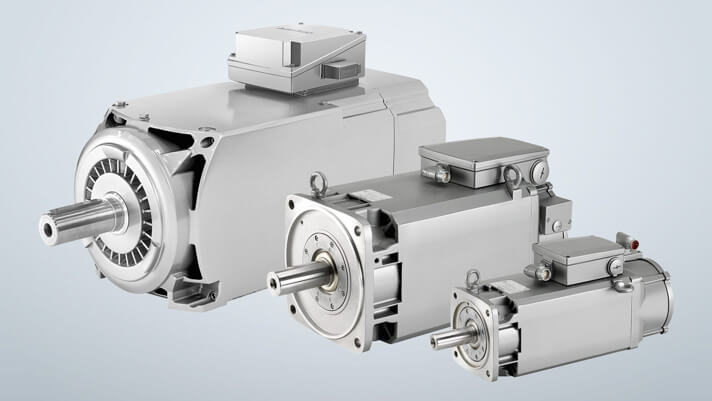In the world of computer numerical control (CNC) machining, precision and efficiency are paramount. One of the key components driving these aspects is the CNC spindle motor. This critical device plays a pivotal role in the operation of CNC machines, ensuring the accurate and controlled rotation of cutting tools. In this article, we will delve into the intricacies of CNC spindle motors, exploring their functions, types, applications, and the crucial role they play in modern manufacturing.
The Basics of CNC Spindle Motors
A CNC spindle motor is essentially the heart of a CNC machine, responsible for driving the cutting tools that shape and carve materials with precision. Unlike traditional machining methods, CNC machining relies on automated processes guided by computer programs. The spindle motor is a central part of this automation, providing the rotational force necessary for machining tasks.
Functions of CNC Spindle Motors
The primary function of a CNC spindle motor is to rotate the cutting tool at high speeds, allowing for precise material removal. The rotational speed and power of the spindle motor significantly impact the machining process’s accuracy, surface finish, and overall efficiency. CNC spindle motor’s are designed to provide consistent and reliable performance, ensuring that the machining operations meet stringent quality standards.
Types of CNC Spindle Motors
CNC spindle motors come in various types, each tailored to specific machining requirements. The two main types are:
AC Spindle Motors: AC spindle motors are widely used in CNC machining due to their simplicity and reliability. They operate on alternating current and are known for their ability to provide a constant speed. However, they may lack the speed control precision offered by their DC counterparts.
DC Spindle Motors: DC spindle motors, running on direct current, offer superior speed control and responsiveness. This makes them suitable for applications requiring variable speeds and intricate machining operations. DC spindle motors are often favored in scenarios where precision is paramount.
Applications of CNC Spindle Motors
CNC spindle motors find applications in a diverse range of industries, contributing to the manufacturing of various products across sectors. Some key applications include:
Milling: CNC milling machines rely on spindle motors to rotate cutting tools, enabling precise material removal. Whether it’s creating intricate designs or producing complex components, CNC milling owes much of its efficiency to the capabilities of the spindle motor.
Routing: In the realm of CNC routing, where materials like wood, plastic, or metal are shaped into desired forms, spindle motors play a crucial role. They dictate the rotational speed and power needed for optimal cutting performance.
Turning: CNC turning machines, used for cylindrical or tubular part production, leverage spindle motors to rotate the workpiece. This rotation, combined with the movement of cutting tools, facilitates the turning process with high precision.
Grinding: Precision grinding operations demand consistent and controlled spindle motor performance. CNC grinding machines rely on spindle motors to achieve the accuracy required for applications ranging from tool sharpening to surface finishing.
Factors Influencing CNC Spindle Motor Performance
Several factors contribute to the performance of CNC spindle motors, and understanding these variables is crucial for optimizing machining processes. Some key factors include:
Speed and Torque: The rotational speed and torque output of a spindle motor are critical parameters affecting machining performance. Different applications may require varying speed ranges and torque levels, and selecting the appropriate spindle motor is essential for achieving optimal results.
Cooling Systems: CNC spindle motor’s generate heat during operation, and efficient cooling systems are necessary to maintain optimal performance. Air or liquid cooling systems help dissipate heat, preventing overheating and ensuring consistent spindle motor functionality.
Bearings and Lubrication: The quality of bearings and lubrication systems in a CNC spindle motor directly impacts its lifespan and reliability. High-quality bearings reduce friction and wear, contributing to smoother operation and prolonged motor life.
Control Systems: Advanced control systems are integral to achieving precise speed and position control in CNC spindle motors. Modern CNC machines often feature sophisticated control technologies that enhance overall accuracy and responsiveness.
Advancements in CNC Spindle Motor Technology
As technology continues to evolve, CNC spindle motor’s have seen significant advancements aimed at improving performance, efficiency, and reliability. Some notable developments include:
High-Frequency Spindle Motors: High-frequency spindle motors allow for increased rotational speeds, enabling faster machining without compromising precision. These motors are particularly beneficial in applications requiring fine detail and intricate designs.
Brushless Spindle Motors: Brushless spindle motors have gained popularity due to their reduced maintenance requirements and improved efficiency. The absence of brushes eliminates wear and tear, resulting in longer operational life and enhanced reliability.
Smart and Integrated Systems: Modern CNC spindle motor’s often come equipped with smart features and integrated control systems. These advancements enable real-time monitoring, predictive maintenance, and seamless integration with CNC machining processes, contributing to overall operational efficiency.
Conclusion
The CNC spindle motor stands as a testament to the advancements in manufacturing technology, playing a pivotal role in the precision and efficiency of CNC machining processes. As industries continue to demand higher levels of accuracy and productivity, the development and integration of innovative spindle motor technologies will undoubtedly shape the future of CNC machining. Understanding the functions, types, applications, and influencing factors of CNC spindle motor’s are crucial steps toward harnessing their full potential and unlocking new possibilities in the world of precision manufacturing.







